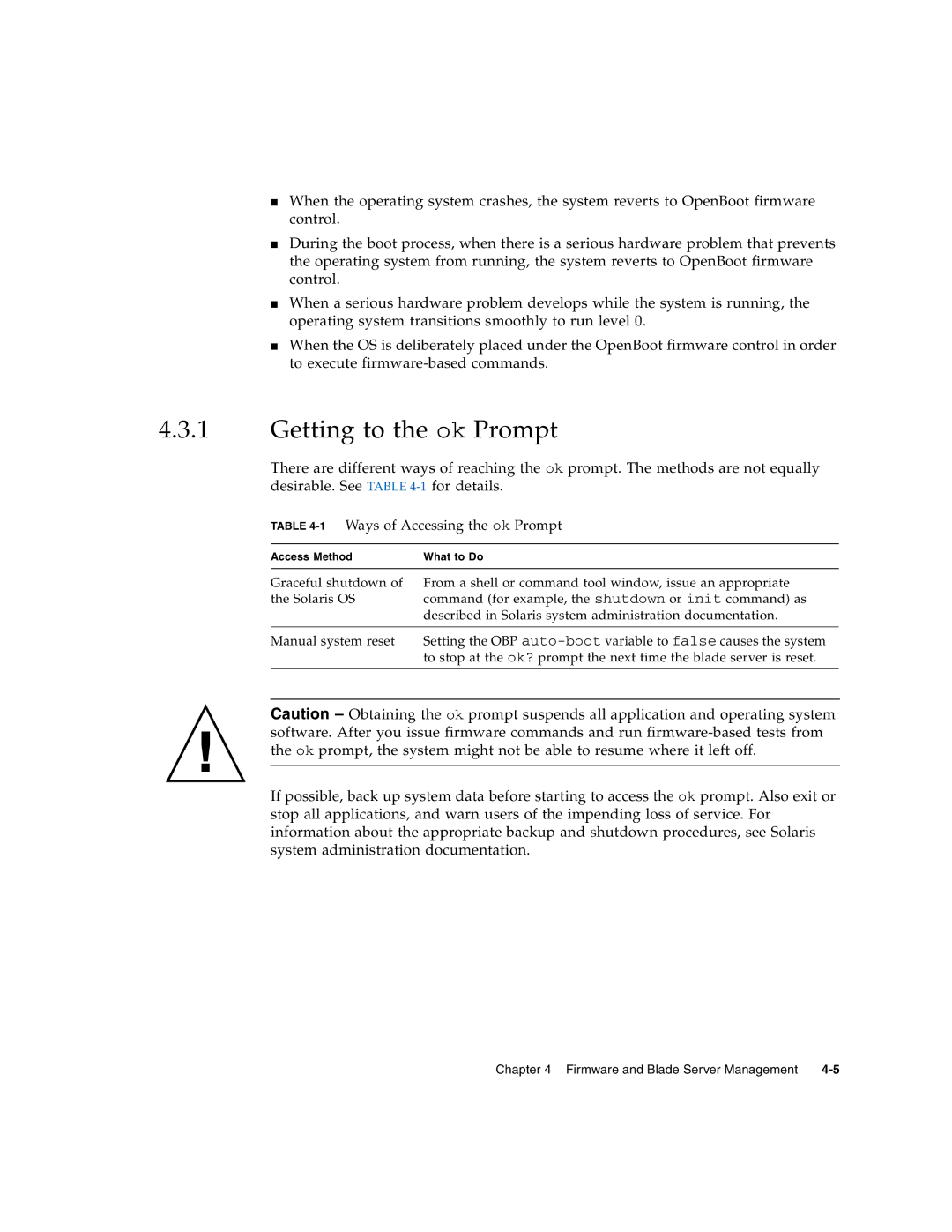
■When the operating system crashes, the system reverts to OpenBoot firmware control.
■During the boot process, when there is a serious hardware problem that prevents the operating system from running, the system reverts to OpenBoot firmware control.
■When a serious hardware problem develops while the system is running, the operating system transitions smoothly to run level 0.
■When the OS is deliberately placed under the OpenBoot firmware control in order to execute
4.3.1Getting to the ok Prompt
There are different ways of reaching the ok prompt. The methods are not equally desirable. See TABLE
TABLE 4-1 Ways of Accessing the ok Prompt
Access Method | What to Do |
|
|
Graceful shutdown of | From a shell or command tool window, issue an appropriate |
the Solaris OS | command (for example, the shutdown or init command) as |
| described in Solaris system administration documentation. |
|
|
Manual system reset | Setting the OBP |
| to stop at the ok? prompt the next time the blade server is reset. |
|
|
Caution – Obtaining the ok prompt suspends all application and operating system software. After you issue firmware commands and run
If possible, back up system data before starting to access the ok prompt. Also exit or stop all applications, and warn users of the impending loss of service. For information about the appropriate backup and shutdown procedures, see Solaris system administration documentation.
Chapter 4 Firmware and Blade Server Management |
